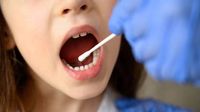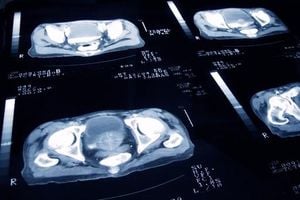It’s not every day that a medical breakthrough comes disguised as something as simple as a two-minute cheek swab. Yet, researchers in the UK are now suggesting that this quick and painless procedure could be the key to identifying children at risk of arrhythmogenic cardiomyopathy (ACM)—a rare but potentially fatal heart condition responsible for more than 10 percent of sudden cardiac deaths in young people, according to the British Heart Foundation (BHF).
ACM is a genetic disorder where the proteins that normally hold heart muscle cells together are defective. This defect causes those cells to die off, replaced by scar tissue and fat. The consequences can be catastrophic: heart palpitations, fainting, breathlessness, abnormal rhythms, and swelling in the tummy, legs, or ankles. Worst of all, ACM can strike without warning—sometimes with tragic results.
But here’s the kicker: the same protein abnormalities that cause ACM in the heart can also be detected in the cells lining the inside of the cheek. That’s the insight driving a new study led by experts at City St George’s, University of London, and Great Ormond Street Hospital. Their research, funded by the BHF and presented at the European Society of Cardiology Congress in Madrid, could change the way doctors screen for this elusive killer.
The study involved 51 children, ranging from just three months old to 18 years, each with a known genetic risk for ACM. Every three to six months, these children had their cheeks swabbed—a process that takes only two minutes and is completely non-invasive. Out of the 51, ten eventually developed ACM. Remarkably, in eight of those cases, the cheek swabs picked up abnormalities before any other medical tests did.
But the researchers didn’t stop there. They also included a control group of 21 children with no known genetic risk for ACM. Even among these children, five showed abnormalities detected by the cheek swab. What’s more, the swabs revealed changes up to five years before a clinical diagnosis was made, as confirmed by hospital scans and other tests. That’s five years of potential warning—five years to intervene, monitor, and maybe even prevent sudden tragedy.
Joanna Jager, one of the lead researchers at City St George’s, underscored the urgency: “There is a real need for a quick and easy test, to flag suspected ACM, which can then be confirmed by hospital tests.” Her words echo the sentiments of families and clinicians alike, who often struggle with the uncertainty and unpredictability of this disease.
In the UK, it’s estimated that about one in every 10,000 people has ACM. While that might sound rare, the consequences are anything but. The condition accounts for a significant share of sudden cardiac deaths among the young—a statistic that has left parents and doctors searching for better ways to identify those at risk.
What sets this new cheek swab test apart is its simplicity and accessibility. Dr. Angeliki Asimaki, a reader in cardiac morphology and sudden death at City St George’s, explained: “Our test provides a window into microscopic changes happening in the heart, and it is totally risk-free and non-invasive. This has the potential to provide accurate and timely diagnosis of ACM, which could ultimately save lives.”
For many children, the prospect of a blood test or other invasive procedure can be daunting. But as Dr. Asimaki points out, “Patients, particularly children, have told us they hugely prefer the speed and ease of a cheek swab to alternatives such as blood tests.” That preference isn’t just about comfort—it’s about compliance, too. If screening is easy, more families are likely to participate, increasing the chances of catching ACM early.
The research team is already looking ahead, developing home swab kits that could be mailed in for analysis. The vision? A world where families can perform the test at home and send the samples directly to researchers. That could be a game-changer, especially for families living far from specialized medical centers or for those who need regular monitoring.
Dr. Sonya Babu-Narayan, a consultant cardiologist and clinical director at BHF, emphasized the stakes: “Arrhythmogenic cardiomyopathy has the potential to develop and strike without warning and sadly can risk sudden death in children, so it’s important that research helps us discover how to diagnose it early. This kind of simple, pain-free cheek swab test could identify children in the early stages of ACM who need extra care, or provide reassurance to at-risk children and their families with normal test results.”
The potential impact of this research is hard to overstate. For families with a history of ACM, the fear of the unknown is ever-present. Even children with no known genetic risk could benefit, as the study showed that swabs sometimes detected abnormalities in those considered low-risk. Early detection could mean the difference between life and death, allowing for closer monitoring, lifestyle adjustments, or preventive treatments before symptoms ever appear.
But of course, this is still early days. The cheek swab test is not yet a routine part of pediatric care. The researchers are continuing to refine the technology, working to ensure its accuracy and reliability before it becomes widely available. They’re also exploring how best to integrate the test into existing diagnostic pathways—making sure that a positive swab leads to the right follow-up care, and that families aren’t left in limbo with inconclusive results.
It’s worth noting that ACM isn’t the only heart condition that can strike without warning, but it is one of the most insidious because of its genetic roots and its tendency to remain silent until disaster strikes. That’s why the medical community is watching this research so closely. If a simple cheek swab can tip the odds in favor of early detection, it could set a precedent for screening other inherited heart conditions as well.
For now, the message from researchers is one of cautious optimism. As Dr. Asimaki put it, “We are currently developing test kits which would allow children to do cheek swabs at home and post them off to researchers for analysis.” It’s a vision that could soon become reality, bringing hope to families who’ve lived too long in the shadow of sudden, unexplained loss.
Sometimes, the most powerful tools in medicine aren’t the most complicated. In the fight against ACM, a simple cheek swab might just be the breakthrough families have been waiting for.




